Q
What is the Toyota Corolla Cross Size? How Big Is It?
As a compact SUV highly popular in the Malaysian market, the Toyota Corolla Cross has a body size of 4,460 mm in length, 1,825 mm in width, and 1,620 mm in height, with a wheelbase of 2,640 mm. This size design makes it flexible and convenient for city driving, while also providing sufficient interior space to meet the needs of family outings. The trunk volume of this car is 487 liters, and the storage space can be further expanded when the rear seats are folded down, which is very suitable for Malaysian users who like weekend road trips or need to carry a large amount of items.
In the Malaysian market, the Corolla Cross offers two versions: a 1.8-liter naturally aspirated version and a 1.8-liter hybrid version. The hybrid version is especially suitable for the urban driving environment where traffic congestion is often encountered, effectively improving fuel economy. The ground clearance of this car is 161 mm, allowing it to easily handle the common road conditions in Malaysia, including uneven roads and occasional waterlogged sections on rainy days.
The success of the Corolla Cross in the Malaysian market is not only due to its reasonable body size but also because of its reliability, practicality, and the good reputation of the Toyota brand locally. It is a very worthy option among models in the same class.
Special Disclaimer: This content is published by users and does not represent the views or position of PCauto.
Related Q&A
Q
What Segment is Toyota Corolla Cross?
The Toyota Corolla Cross is classified as a C-Segment SUV in the Malaysian market. It belongs to the compact crossover SUV category. Its body size and positioning are between the B-Segment and D-Segment, making it suitable for consumers who pursue both space functionality and flexible driving. This vehicle is built on the Toyota TNGA-C platform and offers two engine options: a 1.8L naturally aspirated engine and a 1.8L hybrid engine. The wheelbase reaches 2640mm. The rear legroom and the 436-liter trunk volume (319 liters for the hybrid version) are outstanding among its peers. At the same time, it comes standard with the Toyota Safety Sense active safety system, which includes pre-collision warning, lane-keeping assist and other configurations.
For Malaysian users, the ground clearance of the Corolla Cross (161mm) can adapt to the local variable road conditions. The hybrid version has become a popular choice thanks to its fuel efficiency of 23.8km/L. It is worth noting that in Malaysia, the C-Segment also includes competitors such as the Honda HR-V and the Mazda CX-30. Consumers can compare the differences between different brands in terms of intelligent configurations (such as wireless charging and panoramic sunroof) and after-sales warranty conditions (Toyota offers a 5-year unlimited mileage warranty). This type of vehicle usually targets young families or first-time buyers upgrading to an SUV. It is recommended to test drive the vehicle in person before purchasing to see if the suspension tuning and noise insulation meet your needs.
Q
What is the Reslae Value of Toyota Corolla Cross?
The Toyota Corolla Cross has performed quite well in terms of second - hand car resale value in Malaysia. This is mainly due to the high recognition of the Toyota brand in the local area, as well as the reliability and practicality of this car itself. As a popular compact SUV, the Corolla Cross can usually maintain a relatively high resale value in the second - hand car market thanks to its fuel efficiency, low failure rate, and extensive after - sales service network. Generally speaking, a three - year - old Corolla Cross can retain about 60% to 70% of its original price. The specific price will vary depending on the vehicle's condition, mileage, and configuration.
In addition, Malaysian consumers generally prefer Japanese cars, especially Toyota models. This brand loyalty further supports its second - hand car value. If you plan to buy or sell a Corolla Cross, it is recommended to have regular maintenance and keep a complete maintenance record, which can help you get a better price during the transaction. At the same time, understanding the current market conditions and the second - hand car prices of competitors can also give you more confidence in buying or selling.
Q
How Many CC is the Toyota Corolla Cross?
The Toyota Corolla Cross comes with two engine options in the Malaysian market. The petrol model is powered by a 1.8L 2ZR-FBE naturally aspirated engine with a displacement of 1798cc. The hybrid version also features a 1.8L 2ZR-FXE engine, paired with an electric motor system, and shares the same 1798cc displacement.
Both engines are finely tuned by Toyota to strike a balance between power and fuel efficiency, making them well-suited for both daily city driving and longer highway trips in Malaysia.
Engine displacement (CC) measures the total volume of the engine’s combustion chambers. While it often relates to power and fuel consumption, real-world performance also depends on factors like engine technology, vehicle weight, and transmission setup.
As a global strategic model, the Corolla Cross is known for its reliable engine tech and relatively low maintenance costs. It’s a solid choice for Malaysian drivers. If you’re looking for better acceleration and smoother performance, the hybrid version with its electric motor support is definitely worth considering.
Q
What is the Engine in Toyota Corolla Cross?
The Toyota Corolla Cross offers two powertrain options in the Malaysian market, namely a 1.8-liter naturally aspirated gasoline engine and a 1.8-liter hybrid system. The 1.8-liter gasoline engine, coded as 2ZR-FE, uses Dual VVT-i dual variable valve timing technology. It has a maximum output power of 139 horsepower and a peak torque of 172 Nm. It is paired with a 7-speed CVT gearbox, which features smooth operation and fuel efficiency.
The hybrid version is equipped with a 1.8-liter 2ZR-FXE Atkinson cycle engine, combined with an electric motor to form the THS II hybrid system. The combined power reaches 121 horsepower, and it has better fuel consumption performance, making it particularly suitable for the frequent stop-and-go traffic conditions in Malaysian cities.
Both engines have been carefully tuned by Toyota. They perform excellently in terms of durability and maintenance cost, meeting the Malaysian consumers' demand for reliability. It's worth mentioning that Toyota's hybrid technology has built up a good reputation in the local market over the years, and the battery pack also comes with a warranty of up to 8 years, giving car owners more peace of mind.
Whether it's the traditional fuel version or the hybrid version, the Corolla Cross can meet the daily commuting needs. Consumers can choose the most suitable powertrain configuration according to their budget and usage habits.
Q
What is the Gearbox Type of the Toyota Corolla Cross?
In Malaysia, the Toyota Corolla Cross comes with two types of gearboxes, depending on the powertrain. The petrol models use a Direct Shift-CVT, which combines the smooth feel of a regular CVT with a built-in launch gear for better low-speed response. The hybrid version, on the other hand, uses an E-CVT (Electronic Continuously Variable Transmission) that's specially designed for hybrid systems and uses a planetary gear setup for efficient power delivery.
Both gearboxes are tuned by Toyota to offer a good balance of fuel efficiency and comfort, making them a solid fit for Malaysia’s varied road conditions. CVTs are popular here thanks to their simple design and lower maintenance costs, while E-CVTs are better suited for those who care about saving fuel and reducing emissions. Whichever you choose, Toyota’s transmission tech is known for being reliable and easy to live with.
Q
What is the PCD Size of the Toyota Corolla Cross?
In Malaysia, the Toyota Corolla Cross has a PCD (Pitch Circle Diameter) of 5x114.3mm. This means the wheel hub has 5 bolt holes arranged evenly on a circle with a diameter of 114.3mm. This size matches many popular Japanese models like the Honda CR-V and Mazda CX-5, making it easier for owners to find compatible wheels or upgrade their brakes.
Knowing the correct PCD size is important when changing wheels or fitting spacers. If the size doesn’t match, it can cause shaking or even safety issues while driving.
Besides PCD, Malaysian buyers should also check the center bore diameter (CB) and offset (ET value) when choosing wheels. It’s best to confirm these specs with professional tyre shops or official dealers to ensure a perfect fit. Also, when upgrading wheels, keep the overall diameter close to the original to avoid affecting your speedometer or suspension life. For major changes, consult a certified technician to make sure your modifications meet JPJ regulations.
Q
Is Toyota Corolla Cross a Good Car? Learn the Pros and Cons Here
The Toyota Corolla Cross is a well-liked compact SUV in Malaysia, and for good reason. It offers the kind of reliability you’d expect from Toyota, plus a practical layout and low running costs—great for daily family use. You can choose between a 1.8L petrol engine or a hybrid system, both of which are fuel-efficient and handle local road conditions and petrol prices well. The standard Toyota Safety Sense (TSS) package adds features like lane keeping and automatic emergency braking, which help boost overall safety.
That said, the interior does use quite a bit of hard plastic, and cabin insulation isn’t the best in its class. Taller passengers might also find the rear seat a little tight.
One thing buyers in Malaysia will appreciate is that the Corolla Cross has been tuned to suit the local climate—it has strong air-conditioning and good anti-rust protection. Plus, Toyota’s wide service network makes maintenance easy and worry-free.
If your budget allows, the hybrid version could save you more on fuel in the long run. Just keep in mind that battery health can be affected by heat, so it’s a good idea to get it checked regularly in Malaysia’s tropical weather.
Q
What is the Width of Toyota Corolla Cross?
The body width of the Toyota Corolla Cross is 1,825 millimeters. This dimension places it in the upper - middle range among compact SUVs in the Malaysian market, offering relatively spacious seating and stable driving performance. As a hot - selling model, the Corolla Cross has won the favor of many family users in Malaysia thanks to its reasonable body size and practicality. Its width not only ensures the comfort of lateral space inside the car but also helps improve the vehicle's stability when cornering.
For Malaysian consumers, understanding the vehicle's dimensions is very important as it is closely related to the convenience of daily driving, especially on narrow urban roads or when parking. In addition to the width, other dimension data of the Corolla Cross are also worthy of attention. For example, its wheelbase is 2,640 millimeters, which further guarantees the legroom for rear - seat passengers.
In Malaysia's rainy climate, the wider body can provide better driving stability, especially at high speeds or on slippery roads. When choosing an SUV, body size is one of the factors that need to be considered comprehensively. The well - balanced performance of the Corolla Cross makes it a worthy option in the Malaysian market.
Q
What is the Road Tax Price of Toyota Corolla Cross? How to Calculate it?
In Malaysia, the road tax for the Toyota Corolla Cross depends on engine size. The 1.8L petrol model falls under the 1801cc–2000cc category, which costs RM379 per year. The hybrid version has the same engine size, so it technically falls under the same category, but hybrids are often eligible for discounts, depending on the latest government policies.
To get the exact figure, you can check the JPJ rate table or use online platforms like MyEG or the JPJ website to calculate and pay your road tax.
Malaysia uses a progressive road tax system, which means the cost jumps significantly as engine size increases. For example, cars in the 2001cc–2500cc range pay RM834 per year. So when you're buying a car, don’t forget to consider these long-term costs.
Besides road tax, it’s also mandatory to buy insurance. At the very least, you’ll need third-party coverage, but many drivers go for comprehensive plans for better protection.
Also, make sure your road tax sticker is always valid and visible. Driving with an expired or missing sticker can get you fined, or even worse, your car could be impounded. If you lose the sticker, just apply for a new one through JPJ to stay on the safe side.
Q
What Is the Toyota Corolla Cross Engine Oil Capacity?
For the Malaysian-spec Toyota Corolla Cross, the 1.8L petrol engine (2ZR-FE) takes about 4.2 liters of engine oil if you're also changing the oil filter. The hybrid version (2ZR-FXE), which uses an Atkinson-cycle design, requires slightly less which is around 3.9 liters.
Toyota recommends using 0W-16 or 5W-30 low-viscosity oil, which works well in Malaysia’s hot and humid climate.
Since the weather here can wear down oil faster, it’s a good idea to check your oil level every 5,000 km or six months, and even more often if you’re always stuck in traffic or drive long distances.
When choosing oil, go for ones that meet API SP/GF-6 or ILSAC standards. These oils help prevent sludge build-up caused by frequent stop-and-go driving. Toyota Genuine Motor Oil is designed for local conditions, but Shell Helix, Castrol Edge, or other reputable brands are also solid choices as long as they meet the spec.
If you're extra careful, you can even use oil test strips to check if the oil still protects well. This is especially useful for keeping your engine’s VVT-i system in top shape.
Latest Q&A
Q
How big is Myvi fuel tank?
As one of the most popular national cars in Malaysia, the fuel tank capacity of the Perodua Myvi varies according to different generations and versions. The standard fuel tank capacity of the current third - generation Myvi (from 2017 to present) is 36 liters. It features a lightweight resin fuel tank design, which balances the fuel storage needs and the vehicle's body weight.
The fuel tank size of this B - segment model matches the fuel economy of its 1.3L/1.5L engines. It can provide a cruising range of approximately 450 - 550 kilometers under combined driving conditions, making it suitable for urban commuting and short - distance trips. It's worth noting that the actual available fuel tank capacity might be slightly less than the nominal value. This is because about 5% of the tank space is reserved for fuel expansion as a safety measure.
For owners planning long - distance drives, it is recommended to use the fuel efficiency display function on the Myvi's dashboard to monitor fuel consumption in real - time. Also, it's advisable to develop the habit of refueling when the fuel gauge shows that there is about 1/4 of the fuel left. This can prevent the fuel pump from overheating and also help deal with the situation where gas stations are far apart in some remote areas of Malaysia.
Some comparable models in the same segment, like the Proton Iriz, have a 40 - liter fuel tank. However, the actual cruising range needs to be considered in combination with the engine efficiency. Thanks to Perodua's mature powertrain tuning, the Myvi always maintains a competitive edge in terms of fuel economy.
Q
Does Myvi use CVT?
Yes, the Perodua Myvi does use CVT (Continuously Variable Transmission) technology in some models, especially the newer ones. For instance, the third-generation Myvi, launched in 2017, and its subsequent versions are equipped with D-CVT (Dual Mode Continuously Variable Transmission) to offer a smoother driving experience and better fuel efficiency. CVT technology optimizes engine performance through continuously variable gear ratios. Compared with traditional automatic transmissions, it can adapt to driving conditions more flexibly, thereby enhancing overall driving comfort. However, earlier Myvi models may have used a traditional 4-speed automatic transmission. So, whether a specific model is equipped with a CVT needs to be confirmed based on the model year and configuration. For Malaysian consumers, the advantages of CVT lie in its smoothness and fuel - saving performance during city driving, which is very suitable for the common local traffic conditions. But if you're looking for more direct power feedback, some drivers may prefer the manual transmission version. If you're considering buying a Myvi, it's recommended to check the official specifications or consult a dealer to confirm the transmission type. You can also take a test drive to see if the actual performance of the CVT meets your driving preferences.
Q
What kind of gearbox is Myvi?
The Myvi is equipped with a Dual Mode CVT (D-CVT) transmission, which is a dual-mode continuously variable transmission. Compared with traditional CVT transmissions, it has an additional gear for high-speed driving, which helps the vehicle achieve better fuel efficiency.
In daily driving, this transmission drives the vehicle in CVT mode. Thanks to the operation of the steel belt, the vehicle moves smoothly and linearly, enhancing comfort. What makes the D-CVT special is that it automatically switches to the gear mode when driving at high speeds. Different from CVT transmissions of other brands, when driving at high speeds, the engine speed of vehicles with ordinary CVT transmissions will increase, the engine noise will get louder, and the fuel consumption will rise. Moreover, the power will decline after exceeding the maximum horsepower speed. However, after the gear of the D-CVT engages, the engine speed decreases, allowing the engine to maintain a reasonable speed and providing the vehicle with continuous and abundant power.
Q
Are Myvi and vios the same engine?
Some models of the Myvi and the Vios use the same engine. Daihatsu and Perodua have a joint - venture engine production plant in Negeri Sembilan, Malaysia, which provides power for multiple models including the Vios. Some models of the Vios and the Myvi are equipped with the 1.5L Dual VVT - i engine. This engine features high efficiency, reliability, and economy. Although its power is not extremely strong (the official 0 - 100km/h acceleration time of the Myvi 1.5 is 10.2 seconds), its low fuel consumption and durability are well - loved by consumers. However, these two cars have different positioning and market targets. Even if they share the engine platform, there are differences in vehicle tuning, configuration, and the overall driving experience.
Q
How many cylinders are in the MYVI?
As one of the most popular national cars in Malaysia, the engine configurations of the Perodua Myvi vary according to different years and versions. Currently, the mainstream models are equipped with two types of Dual VVT - i four - cylinder naturally aspirated engines, namely the 1.3L (1NR - VE) and 1.5L (2NR - VE). Therefore, all Myvi models feature a four - cylinder design. This four - cylinder layout ensures smooth power delivery while taking fuel economy into account, making it highly suitable for the urban road conditions in Malaysia.
It's worth mentioning that four - cylinder engines, due to their simple structure and low maintenance costs, are widely used in B - segment models in the local market. For example, the Proton Saga and Honda City also adopt a similar layout. The 1.5L version of the Myvi can output 102 horsepower and 136 Nm of torque. Coupled with its lightweight body design, it can offer a well - balanced performance whether driving on the congested streets of Kuala Lumpur or cruising on the highway.
For readers who want to learn about engine technology, they can note that the Dual VVT - i system used in the Myvi can intelligently adjust the valve timing. This technology shared by Toyota helps to improve fuel efficiency by about 15%. That's why the Myvi has remained one of the most fuel - efficient cars in Malaysia for years.
View MoreRelated News
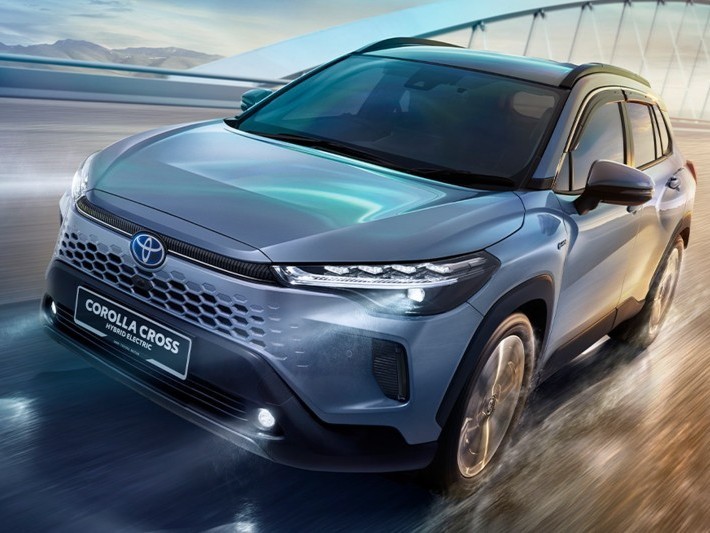
Toyota Corolla Cross Design Revealed: A Versatile Model Combining Practicality and Comfort
AshleyJul 16, 2025

Toyota Unveils All-New Corolla Cross, Introduces GR SPORT Trim for the First Time
JohnMay 8, 2025
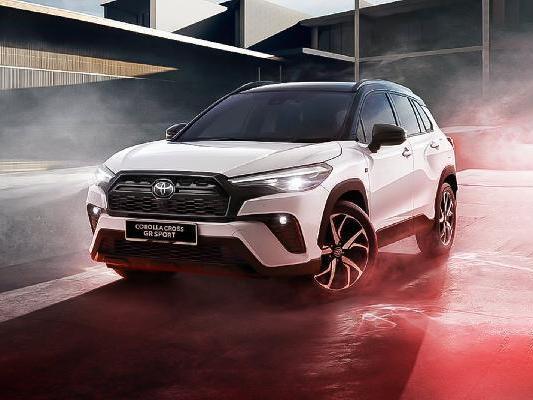
Unveiling the Toyota Corolla Cross Floor Price, super detailed car buying guide!
JohnMar 25, 2025
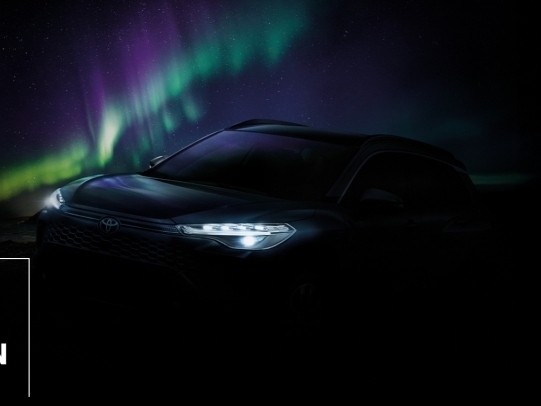
The new Corolla Cross is about to hit the market, this car will reveal Toyota's future design style.
WilliamNov 21, 2024
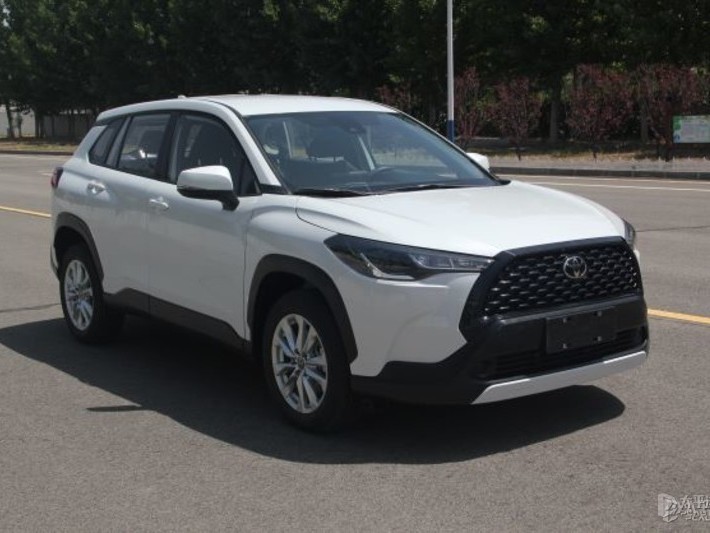
Starting from RM 143,000! Toyota Corolla Cross: Five-seater compact SUV
AshleyJul 30, 2024
View More


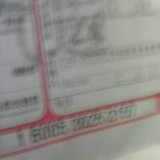









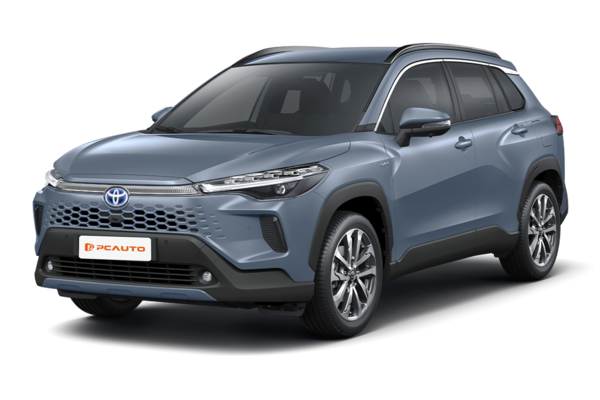





Pros
Cons